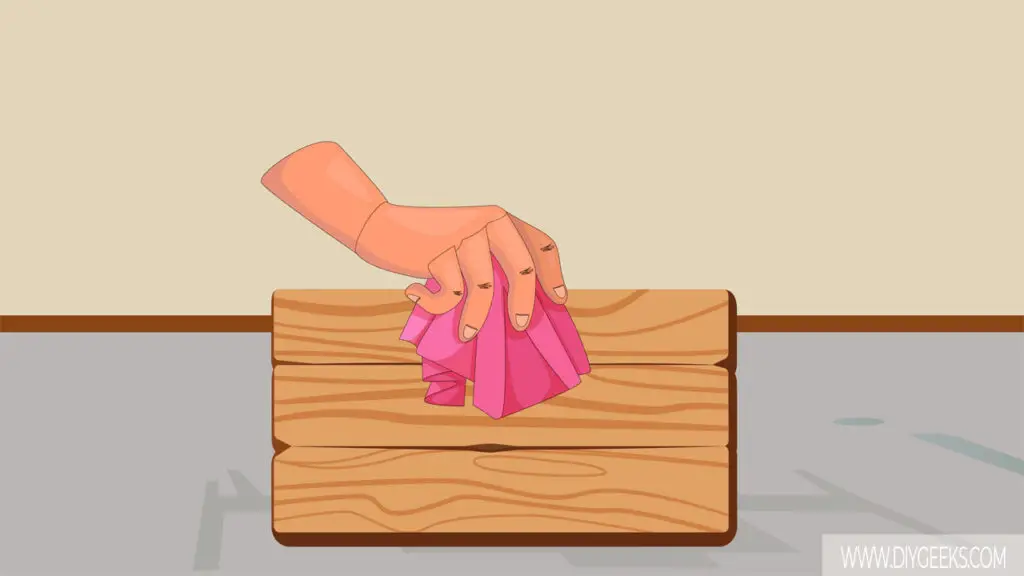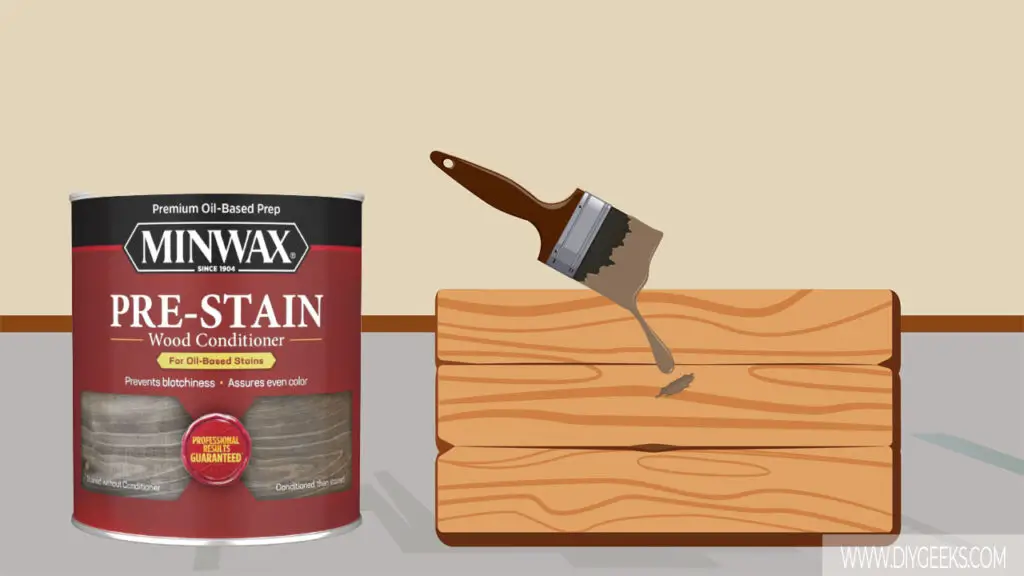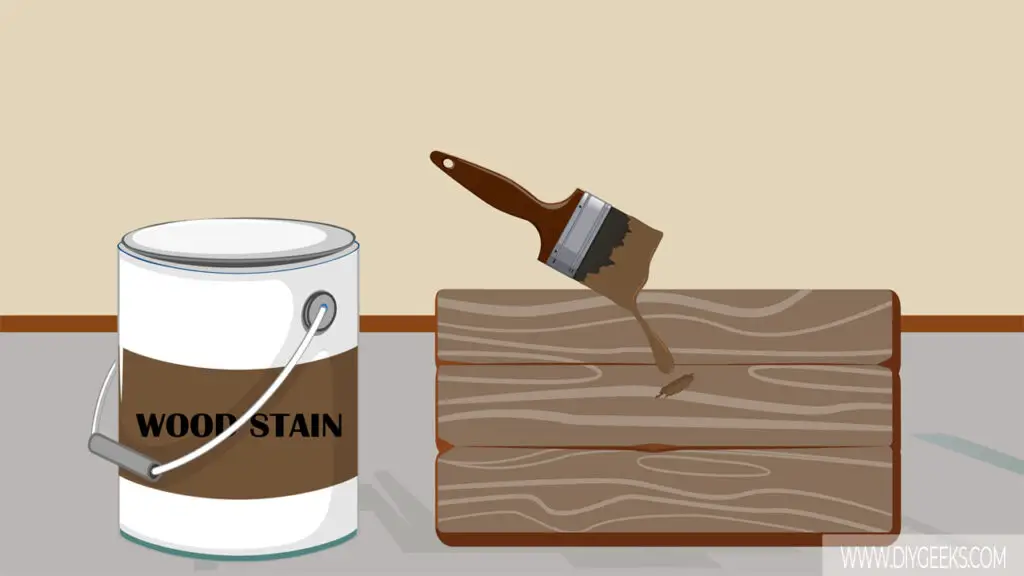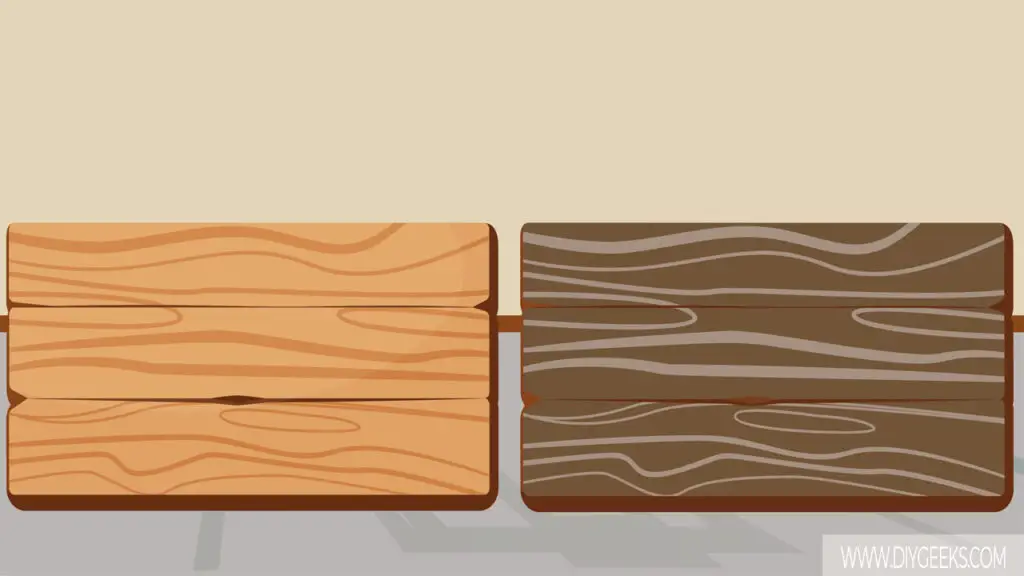You can stain Oak wood as it’s a hardwood that has an open-pore structure that absorbs wood stain. But, you must apply a pre-stain wood conditioner to help the surface absorb wood stain evenly and create a uniform finish.
To stain Oak wood, prep the surface, apply pre-stain wood conditioner, apply the wood stain, and seal the finish.
Is Staining Oak Wood Easy?
Staining oak wood is somewhat easy as the wood has an open-pore structure that absorbs wood stain, but won’t absorb it evenly. You must apply a pre-stain wood conditioner to help the wood absorb stain evenly and create a uniform finish.
The Oak wood porosity depends on the type and species. For instance, red oak is more porous than white oak.
Which Wood Stain Types Can You Use Over Oak Wood?
The wood stain types you can use over Oak wood are listed below.
- Water-based Wood Stain: You can use water-based wood stain over Oak wood as it has a brighter finish that creates a flat, matte, or satin sheen.
- Oil-based Wood Stain: You can use oil-based wood stain over Oak wood as it creates a glossy moisture-resistant coating that reflects light and highlights surface patterns and texture.
- Gel Stain: You can use Gel stain over Oak wood as it creates a uniform amber-like protective finish. Since Gel stain is a topical finish, it doesn’t penetrate the surface pores to adhere.
- Homemade Wood Stain: You can apply homemade wood stain over Oak wood since the surface has large pores. You can stain it with coffee, wood dye, or wood oils.
How to Stain Oak Wood?
To stain Oak wood, do the following things.
- Prep the Surface.
- Apply Pre-stain Wood Conditioner.
- Apply Wood Stain.
- Seal the Finish.
The tools you need for this project are listed below.
- The wood stain of your choice
- A paintbrush or lint-free cloth
- Fine-grit sandpaper
- A portable vacuum
- Drop sheets
- Painter’s tape
- Rags
- Wood conditioner or sanding sealer
- A topcoat or sealer (Polyurethane)
1. Prep the Surface

Prep the Oak wood surface by cleaning and sanding it before applying the wood stain. Clean the surface with a damp rag to remove dirt, dust, and debris that can prevent the stain from penetrating and adhering.
Sand the Oak wood with fine-grit sandpaper (220-grit) to remove surface imperfections and bumps. If the wooden surface is riddled with imperfections or bumps or is already stained or sealed, use medium-grit sandpaper (100-grit).
Use wood filler compound if the wooden surface has cracks or holes.
2. Apply Pre-stain Wood Conditioner

Apply one (1) pre-stain wood conditioner coat over the Oak wood to seal the surface pores, prevent wood stain over-absorption, and help to create a uniform finish. Ensure to spread the wood conditioner equally through the wood surface.
3. Apply The Wood Stain

Apply two (2) wood stain coats over the Oak wood surface using a lint-free cloth. Ensure to massage the wood stain directly over the Oak wood in circulation motion.
Wait until the first stain coat dries, sand the coat with very fine-grit sandpaper (440-grit), remove the excess, and apply the second coat.
4. Seal the Finish

Seal the stained Oak wood finish with a moisture-resistant sealer to increase the finish’s durability. The sealer, such as polyurethane or varnish, will create a moisture-resistant layer (barrier) that protects the finish from moisture, water, scratches, and weather elements.
How To Make Stained Oak Wood Lighter?
To make stained oak wood lighter, do the following things.
- Use Wood Bleach.
- Use Sandpaper.
1. Use Wood Bleach
- Use steel wool to remove the sealer top coat from the wood.
- Apply wood bleach directly over the stained Oak wood. You can also use chemical-based wood finish remover or dilute acetone.
- Wait around 10 minutes.
- Pour white vinegar mixed with warm over the finish to remove the wood bleach residue.
- Inspect the finish.
- Re-apply the wood bleach if the stained wood isn’t light enough.
2. Use Sandpaper
- Use fine-grit sandpaper (220-grit) to remove the sealer top coat.
- Use ultra fine-grit sandpaper (440-grit) to remove the wood stain finish.
- Once most stain is removed from the surface, the finish color shade will be lighter.
How To Make Stained Oak Wood Darker?
To make stained Oak wood darker, do the following things.
- Remove the sealer top coat with medium-grit or fine-grit sandpaper (100/220-grit).
- Apply 1-2 Gel stain coats over the stained Oak wood.
- Seal the Finish.
Gel stain has a gelly-like thicker viscosity that creates a darker color shade finish. Since gel stain is a topical finish, it doesn’t need to penetrate the surface pores to adhere.
Frequently Asked Questions (FAQs)
Does Oak Wood Absorb Stain Better Than Cedar Wood?
Oak wood absorbs wood stain better and faster than cedar wood as it has larger pores that are more porous.
Is Staining Oak Easier than Staining MDF?
Staining Oak wood is easier than staining MDF as MDF boards are synthetic materials that won’t accept stain evenly.
Can You Stain Oak Wood a Different Color?
You can stain Oak wood in different color shades, but the natural wood appearance will impact the final wood stain color shade.
There are two main Oak wood types; White and Red Oak. Red Oak has a reddish natural appearance, so it will tint light wood stain color shades and give them a reddish appearance. White oak has a neutral color and can be stained with different color shades.
How Long Does Wood Stain Last Over Oak Wood?
Wood stain lasts between 1-5 years over Oak wood, depending on the maintenance, whether the finish is sealed or not, and where the material is placed.
For instance, stained Oak wood sealed with polyurethane will last around 5 years if placed indoors or outdoors. On the other hand, unsealed stained Oak wood won’t last more than one (1) year outdoors.
Does Oak Wood Get Lighter or Darker Over Time?
Bare Oak wood gets darker over time as its surface is exposed to dirt, dust, and UV rays.
Stained Oak wooden surface may get lighter or darker depending on the wood stain type. For instance, water-based finishes will become lighter over time, while oil-based finishes will get darker (or yellowish) over time.


